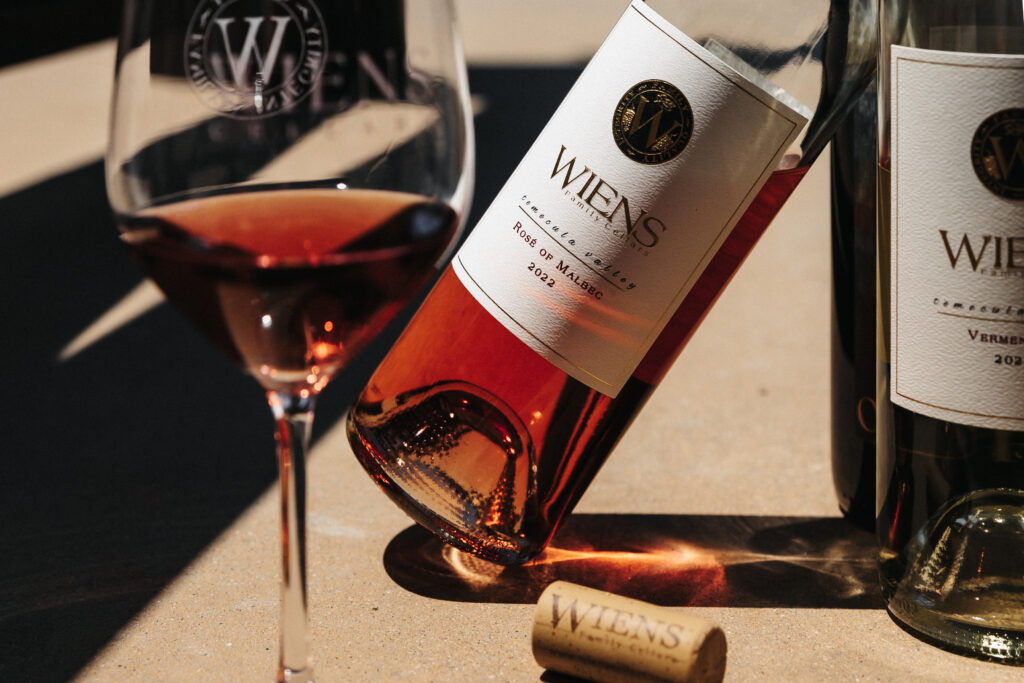A glass of wine, when served at the perfect temperature, can be a symphony of flavors and aromas. However, serving wine at the wrong temperature can dampen its potential. In this guide, we’ll uncover the importance of serving wine at the right temperature and explore the art of achieving the ideal serving conditions. Whether you’re a wine enthusiast or a casual sipper, understanding wine serving temperatures can elevate your wine-drinking experience.
Why Serving Temperature Matters
The Impact of Temperature on Wine Aroma and Flavor
Wine enthusiasts often speak of wine as an art, and like any form of art, it requires the right conditions to be fully appreciated. Temperature plays a pivotal role in this appreciation.
When wine is served at the correct temperature, its aromatic compounds are released in a balanced manner. The initial aroma that greets your senses is known as the “top note.” This top note is influenced by the wine’s temperature. At the ideal temperature, the top note is vivid, showcasing the wine’s primary aromas. As you take a sip and the wine warms slightly in your mouth, a second wave of aromas, known as the “middle note,” is released. These are often more complex and layered, revealing the wine’s depth and character.
Brian Marquez, the mastermind behind the wines at Wiens Cellars, comments on this intricate process: “Temperature is the conductor of the wine’s aromatic symphony. It’s the maestro that brings out the highs and lows, the delicate and the bold, in each wine we produce.”
But it’s not just about the aromas. The flavor profile of a wine is also profoundly affected by temperature. A wine served too cold may taste closed and one-dimensional. The cold mutes the palate, making it challenging to discern the full spectrum of flavors. On the other hand, a wine served too warm can be overly expressive, with the alcohol content dominating the taste. Achieving the right temperature allows the wine’s flavors to harmonize, delivering a balanced and enjoyable tasting experience.
How Temperature Affects the Texture and Mouthfeel of Wine
Beyond aroma and flavor, temperature plays a pivotal role in the texture and mouthfeel of wine. Think of it as the difference between silk and satin. A white wine served too cold might come off as overly crisp, its acidity so sharp it almost stings. While this might be desirable in certain situations, it can overwhelm more delicate white wines.
Conversely, red wines served too warm can feel heavy, even flabby. The alcohol becomes more pronounced, drowning out the wine’s subtler attributes. Achieving the right temperature for red wine allows the tannins, acidity, and fruitiness to align harmoniously, creating a pleasing mouthfeel.
Balancing these elements isn’t just about following a set of rules; it’s about enhancing your enjoyment of wine. Each varietal has its unique characteristics, and by serving it at the right temperature, you can savor every nuance.
Ideal Temperatures for Different Wines
White Wines: Light-bodied vs. Full-bodied
- Light-bodied Whites (e.g., Sauvignon Blanc, Pinot Grigio): These wines shine best between 45°F and 50°F (7°C to 10°C). The cooler temperature preserves their zesty acidity and vibrant fruitiness.
- Full-bodied Whites (e.g., Chardonnay, Viognier): Optimal serving temperature ranges from 50°F to 55°F (10°C to 13°C). This slightly warmer setting allows the wine’s complexity to unfold.
Red Wines: Light-bodied vs. Medium-bodied vs. Full-bodied
- Light-bodied Reds (e.g., Pinot Noir, Gamay): Aim for 55°F to 60°F (13°C to 16°C). Slightly below room temperature lets these wines express their delicate red fruit notes.
- Medium-bodied Reds (e.g., Merlot, Zinfandel): The sweet spot is around 60°F to 65°F (16°C to 18°C). This brings out their rich texture and balanced flavors.
- Full-bodied Reds (e.g., Cabernet Sauvignon, Syrah): These wines are best enjoyed at 63°F to 68°F (17°C to 20°C). The warmth accentuates their bold structure and tannins.
Rosé Wines
For Rosé wines, a range of 45°F to 55°F (7°C to 13°C) is ideal. This temperature preserves their refreshing and aromatic character.
Sparkling Wines
Sparkling wines, such as Champagne, should be served at a chilly 40°F to 45°F (4°C to 7°C). The lower temperature keeps the effervescence lively and the flavors crisp.
Dessert and Fortified Wines
Dessert and fortified wines like Port and Sherry are best enjoyed slightly warmer, around 55°F to 65°F (13°C to 18°C). This brings out their rich, sweet characteristics.
Tips for Achieving the Perfect Serving Temperature
Using Wine Refrigerators and Coolers
Investing in a wine refrigerator or cooler is a game-changer for wine enthusiasts. These appliances allow precise temperature control, ensuring your wines are always ready to be enjoyed at their best.
The Art of Decanting and Its Relation to Temperature
Decanting isn’t just about aeration; it can also help adjust the wine’s temperature. Pouring wine into a decanter can slightly warm it if it’s too cold or cool it down if it’s too warm. This subtle change can make a noticeable difference in your tasting experience.
Quick Methods for Cooling Wine
Sometimes, you may need to cool a wine in a hurry. Consider using techniques like an ice bucket, wet paper towels in the freezer, or a wine-chilling stick. These tricks can bring your wine to the right temperature in a matter of minutes.
Common Misconceptions about Wine Temperatures
Debunking Myths like “Serve Reds at Room Temperature”
One of the most persistent myths about serving wine is the recommendation to serve red wines at “room temperature.” The idea of room temperature might have worked well in medieval castles, but today’s room temperatures vary widely, and they’re often warmer than what’s ideal for red wine.
David Steinhafel, owner of Wiens Cellars, sheds light on this common misconception: “The ‘room temperature’ advice might have been relevant centuries ago when rooms were cooler, but in today’s centrally heated homes, it can lead to red wines being served too warm. The ideal temperature for most reds is typically a bit cooler than modern room temperatures.”
The optimal serving temperature for red wines varies depending on the varietal. Lighter reds, like Pinot Noir, shine around 55°F (12-14°C), while fuller-bodied reds, such as Cabernet Sauvignon, benefit from being slightly warmer, around 60-65°F (15-18°C). These temperatures allow the wine to express its nuanced aromas and flavors fully.
The Dangers of Serving Wine Too Cold or Too Hot
Another common misconception is the belief that colder is better when it comes to serving wine. While it’s true that excessively high temperatures can spoil wine, excessively low temperatures can be equally detrimental.
Serving wine too cold numbs its aromas and flavors. This is often the case with white wines, where excessive cold can mask their delicate nuances. A heavily chilled Chardonnay, for instance, may taste more like a glass of ice-cold water than a complex wine with layers of fruit and oak.
On the flip side, serving wine too hot accelerates its aging process. Heat causes the wine to mature rapidly, altering its flavor profile and potentially leading to unpleasant, cooked fruit-like characteristics. It’s like fast-forwarding a movie to the climax before you’ve had a chance to savor the plot.
Brian Marquez, Wiens Cellars’ winemaker, cautions against such extremes: “We put so much effort into crafting wines with balance and finesse. Serving wine too cold or too hot can rob you of the full experience. It’s like listening to a symphony with earplugs—you miss the subtleties that make it beautiful.”
To debunk these common misconceptions and make the most of your wine-drinking experience, it’s essential to follow recommended serving temperatures for different wine types. Your taste buds will thank you.
Serving Temperatures at Wiens Cellars
At Wiens Cellars, the art of serving wine at the perfect temperature is a fundamental aspect of the tasting experience. The winery’s commitment to providing guests with an unforgettable journey through their wines extends to ensuring that each varietal is presented at its optimal temperature, allowing the truest expression of flavors and aromas to shine.
Brian Marquez, Wiens Cellars’ Winemaker, emphasizes the importance of temperature control: “We’re dedicated to delivering high-quality wine experiences, and that includes serving wines at the right temperatures. It’s amazing how temperature nuances can completely transform the way you perceive a wine.”
Wiens Cellars boasts a state-of-the-art wine storage and serving facility, equipped with cutting-edge wine refrigeration systems. This technology allows them to maintain precise control over the temperature of each wine, whether it’s a crisp Chardonnay, a bold Cabernet Sauvignon, or a sparkling Rosé. Brian Marquez elaborates on the meticulous process: “Our wines are stored in climate-controlled cellars, ensuring that they remain in ideal conditions from the moment they’re crafted until they reach the glass of our guests.”
Additionally, Wiens Cellars provides their guests with guidance on the ideal serving temperatures for each wine offered. As owner David Steinhafel explains, “We want our visitors to have the most enjoyable experience possible. That’s why we take the time to educate them on the importance of serving temperatures. It’s amazing how a wine’s true character can be unlocked simply by serving it a few degrees cooler or warmer.”
Wiens Cellars’ commitment to serving wines at their best extends to the tasting room staff, who are well-versed in the nuances of temperature control. They ensure that every wine served is at its peak, enhancing the tasting experience for visitors.
Whether you’re sipping a refreshing Viognier on a warm Temecula afternoon or savoring a rich Tempranillo on a cool evening, Wiens Cellars takes pride in providing you with wines served at the perfect temperature, enhancing the pleasure of every sip. As Brian Marquez concludes, “It’s all about elevating the wine-drinking experience, and temperature plays a significant role in that journey.”
So, when you visit Wiens Cellars, you can trust that the wines you taste will be served with the utmost care and precision, ensuring that every note, every aroma, and every nuance is experienced just as the winemaker and owner intended.

